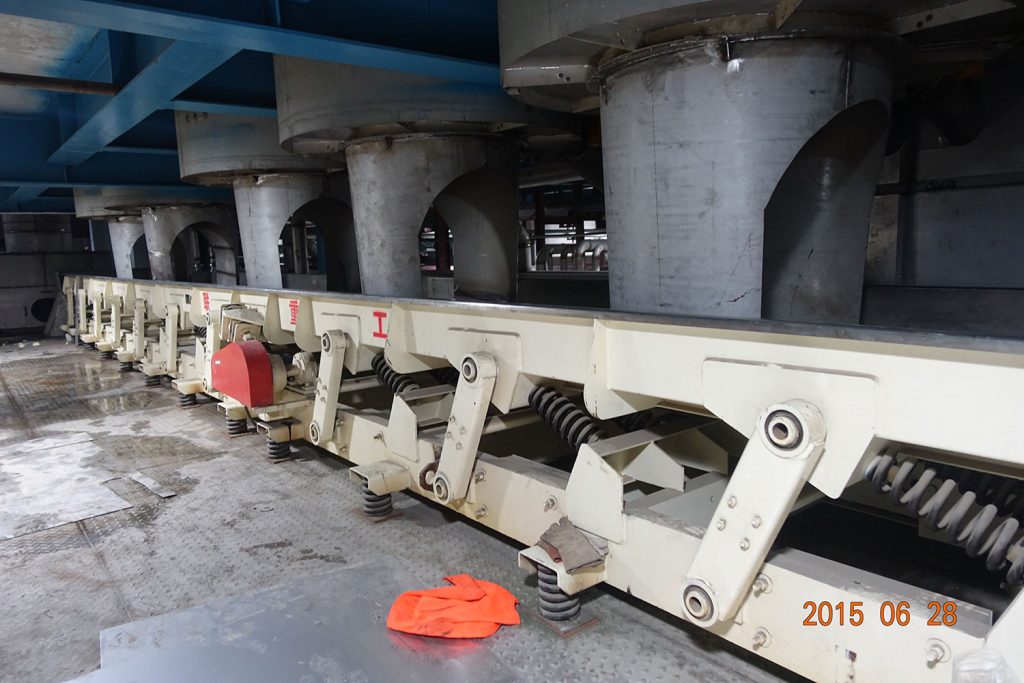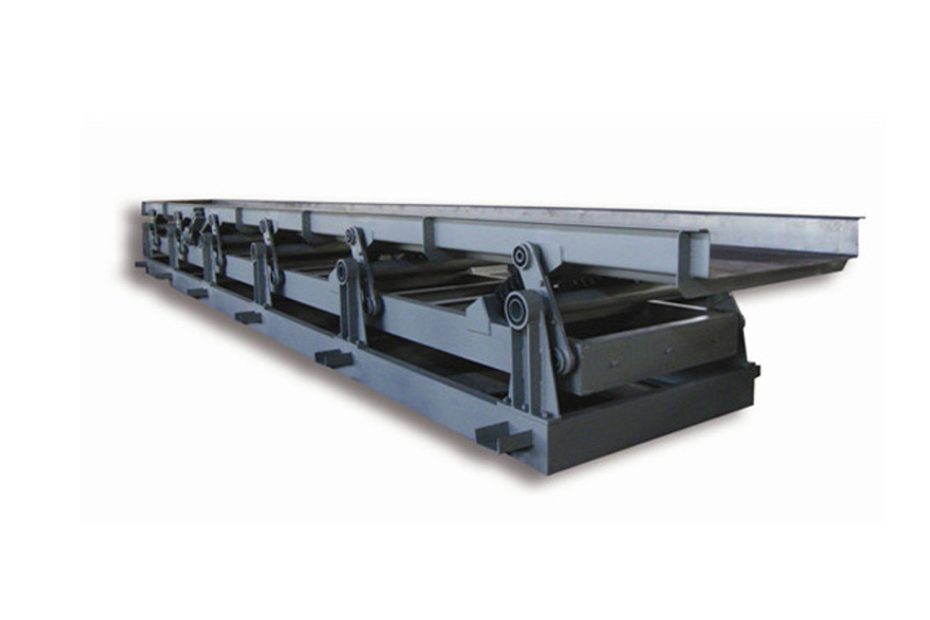Vibrating conveyor is an important inertial conveyor, which is used for short-distance and mid-distance transportation of small block, granular and powdery materials. It can not only transport various ordinary materials and normal temperature materials, but also transport a large number of high-temperature, toxic and other unconventional materials.
Inertial vibrating conveyor is a long-distance conveying equipment with wind lock function. It uses two vibration motors as excitation vibration sources. Using the self-synchronization principle, the two vibration motors rotate in opposite directions, so that the balance frame at the bottom of the conveyor produces reciprocating vibration. Through the action of the main vibration spring and the guide leaf spring, the upper conveying trough is driven to vibrate, thereby achieving the purpose of conveying materials.
Inertial vibrating conveyor runs smoothly, has a simple structure, and is convenient for feeding and unloading. Inertial vibration hot material conveyor is suitable for conveying various powders, granules, blocks and their mixtures below 800℃.

Notes on the installation and use of Inertial vibrating conveyor
- Before the idle run test, check whether the bolts of each part, especially the anchor bolts of the vibration motor, are tight. After 4 hours of continuous operation, the connecting bolts of each part should be re-tightened once, and then tightened repeatedly 2-3 times within a week.
- The rotation directions of the two vibration motors should be opposite during operation.
- During the idle run test, check whether the conveyor is running smoothly, and pay attention to the temperature rise of the vibration motor bearing. After 4 hours of continuous operation, the bearing temperature shall not exceed 75℃.
Conclusion
Inertial vibration conveyors are a type of reliable vibration conveying system with the advantages of simple structure, light weight, low noise, reliable operation, no dust pollution, and easy installation and maintenance. They have been widely used in metallurgy, mining, coal, building materials, chemicals, grain, glass, ceramics and other industries.
